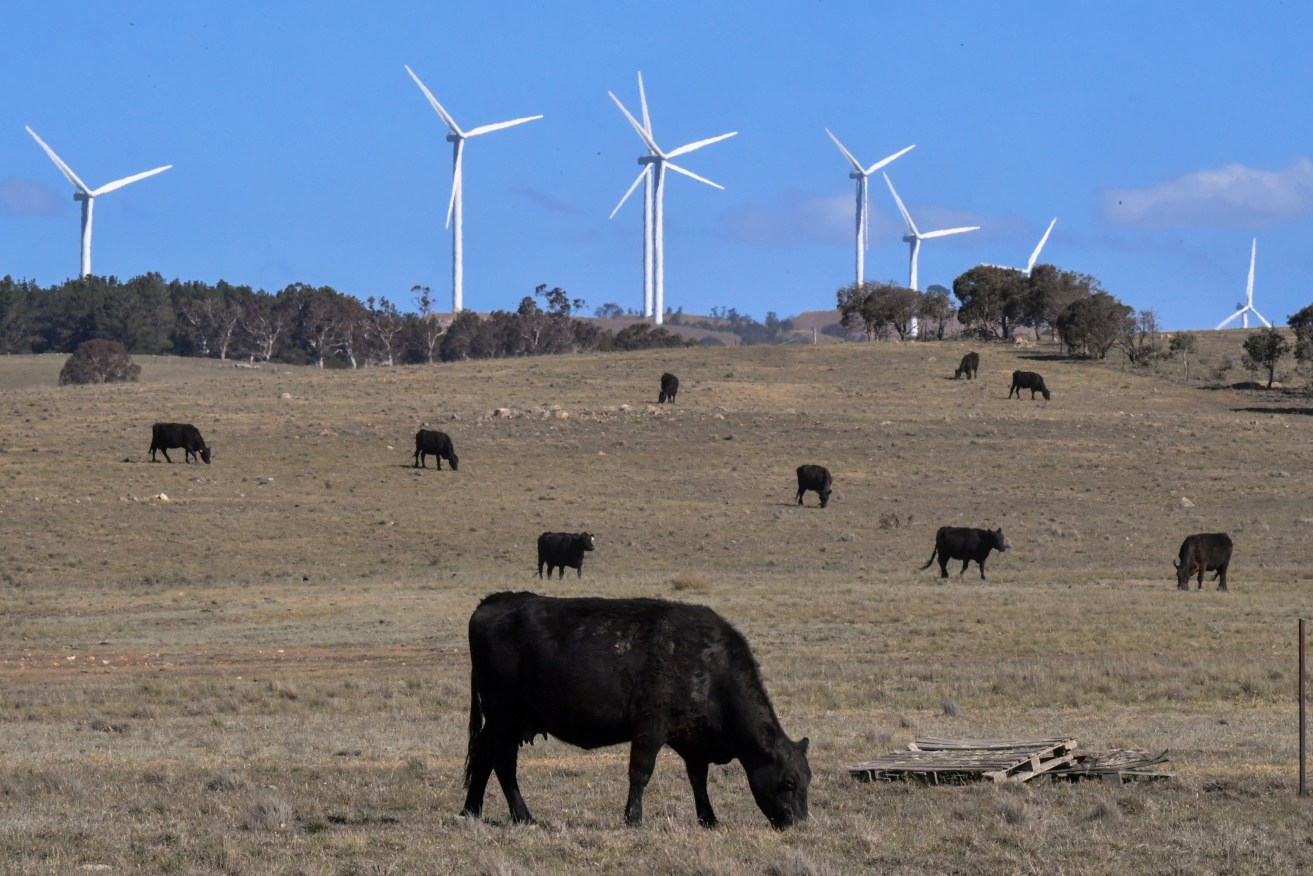Why we’re turning off solar farms when the sun is shining


It’s hard to think of a less efficient thing to do with billions of dollars worth of solar farms than to switch them off when it's sunniest. Photo: AAP
Markets aren’t nearly as efficient as they are cracked up to be. Our housing market focuses on building holiday homes for the holiday homeless rather than actual houses for the actually homeless.
Our supermarkets send tens of thousands of tonnes of fresh produce to landfill each year, rather than offer it to consumers at low prices.
And our electricity market currently requires solar farms to be switched off in the middle of the day (the polite term is we ‘curtail’ them) while our governments invent new ways to subsidise gas and coal-fired power stations to keep operating.
Despite the fact that climate change is caused by what economists call ‘market failure,’ we are often told in Australia that market forces are the best way to fix market failure.
It’s clearly not working.
There’s absolutely no chance that market forces will fix the market failure of climate change, if only because our so-called ‘National Electricity Market’ (NEM) is, in fact, no such thing. Rather, the NEM is a government creation of over 1,000 pages of administrative rules and regulations that are so poorly designed that switching off solar farms when the sun is shining brightest is considered ‘efficient’.
Hint: it’s not.
It’s hard to think of a less efficient thing to do with billions of dollars worth of solar farms than to switch them off when it’s sunniest. Not only are we saying no to lots of low-cost renewable electricity, but we are also reducing the profits earned by those who have invested in renewables when we are supposed to encourage rapid investment in renewables.
Welcome to the topsy-turvy land of Australia’s energy policy.
You might think that the electricity industry would be up in arms about this, but the motives of the big players in our electricity market aren’t complicated. Just as property developers don’t want to flood the property market with lots of houses (it would lower their prices and profits) and supermarkets don’t want to flood the market with lots of fruit and veggies, the owners of fossil-fuelled power plants don’t want to flood the market with lots of low-cost renewable energy.
The coal and gas-fired power stations making peak profits by selling electricity at peak prices in the late afternoon when electricity demand peaks are in no rush to stop the waste of solar capacity in the middle of the day. That said, back in the 1970s and 80s, when we had far more coal-fired electricity than we knew what to do with during the middle of the night, it was the government, not the market, that fixed the problem by requiring ‘off-peak’ hot water systems in millions of homes, investing in pumped hydro and street lighting and even encouraging CBD office towers to leave their lights on all night.
Which brings me to what we need to do now about all the renewable electricity we are wasting in the middle of the day.
While it is easy to see all the lights on in empty CBD offices at night, it’s hard to imagine how simple it would be for big commercial and industrial buildings to make small tweaks to the way they use their air conditioning that would have huge consequences for the cost, carbon content and reliability of our electricity system. Put simply, buildings are major uses of electricity in Australia, and if we can make small changes to when they use electricity, we can have a big impact on whether we can rely on solar rather than coal and gas.
According to a recent research paper based on real-world data from large commercial buildings by Craig Roussac and myself, commercial buildings have enormous potential to act as ‘thermal batteries’ by simply making slight changes to the temperature settings for their air conditioners. Because modern commercial buildings take a long time to heat up or cool down, it’s possible, using just the software and hardware that’s already in place, to shift a large amount of electricity use away from the afternoon peak in demand and towards the midday glut in solar supply.
Indeed, in a real-world trial, a major building in Sydney shifted 800kWh of electricity demand from late afternoon to the middle of the day by simply lowering the air conditioning target temperature by 1 degree early in the day. A battery big enough to shift that much electricity would cost around $500,000. Similarly, small changes in the NEM rules could give buildings much greater incentives to utilise other forms of energy storage and interact with the grid far more efficiently.
Reducing Australia’s emissions will require lots of policies aimed at lots of things. Still, it’s hard to imagine an easier way to rapidly reduce emissions at a low cost than to stop turning our solar farms off when the sun is shining. But markets chase profits, not efficiency, which is why our governments need to step in and change the rules and the ratings used to incentivise and evaluate the way buildings use energy.
Reducing Australia’s emissions will require lots of policies aimed at lots of things, but it’s hard to imagine an easier way to rapidly reduce emissions at a low cost than to stop turning our solar farms off when the sun is shining.
Richard Denniss is executive director of the Australia Institute








